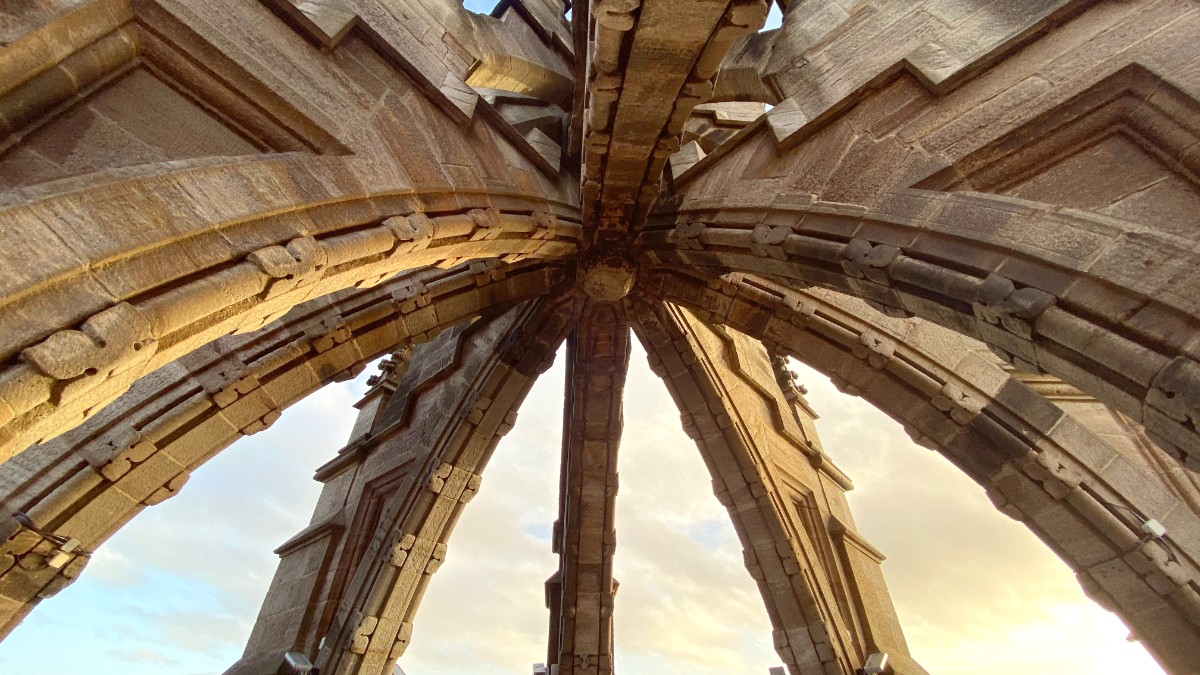
Central Scotland, Scotland
Stirling experiences a temperate maritime climate, shaped by its proximity to the Atlantic Ocean. This means mild summers, cool winters, and consistent rainfall throughout the year. The weather can change rapidly, with sunshine, clouds, and rain often occurring within a single day.
Climate Patterns Throughout the Year:
Late spring (May) and early autumn (September) present the most pleasant temperatures for hiking with fewer midges. A durable Waterproof hiking jacket and Comfortable hiking boots are highly recommended. High season (June-August) confirms all attractions are open and good weather for views. Shoulder seasons deliver a more relaxed experience with fewer visitors. Summer is the peak for events, including the Stirling Highland Games in July. Check local listings for specific dates if a festival visit is a priority.
Pack layers regardless of the season. A waterproof outer layer is always a wise inclusion for any trip to Stirling.
Important information for smooth entry.
For all travelers.
Valid passport, proof of purpose (flights, accommodation), proof of funds, return ticket.
Always consult the official UK government website (gov.uk) for current and accurate visa information. Rules can change.
What to expect on arrival.
No general entry fees for tourists to the UK.
Use eGates if eligible, otherwise speak to an immigration officer. Answer honestly, provide documents. Health-related entry requirements are not specific for general tourism.
Scotland uses the Great British Pound (£, GBP). Withdraw cash from ATMs for better exchange rates than bureaux de change. Credit and debit cards are widely accepted for most purchases. Contactless payment is common. Inform your bank of travel dates. A clear grasp of typical costs allows for effective budgeting.
Hostel Dorm: £25-£45; Budget Hotel: £60-£100; Mid-range: £100-£180; Luxury: £180-£400+.
Budget: £5-£12; Mid-range: £12-£25; Fine Dining: £40-£80+; Coffee: £3-£4; Pint: £4-£6.
Local Bus: £2-£3 (single); Day Ticket: £4-£5; Train (Glasgow/Edinburgh to Stirling): £8-£15; Taxi: £7-£15.
Stirling Castle: £19.50; National Wallace Monument: £11.50; Argyll's Lodging: £8.00; Church of Holy Rude: Free.
10-15% for good restaurant service (check for service charge), round up taxis, optional for hotel staff/tour guides.
Scotland is generally a very safe country, but awareness of common concerns and access to information about local services presents a wise approach.
No specific vaccinations are mandatory for entry to the UK for most travelers from North America, Europe, or Australia/New Zealand. It is good practice to ensure routine vaccinations are up to date, as advised by your national health authority (e.g., MMR, Diphtheria-Tetanus-Polio, seasonal flu vaccine). Consult your doctor or national travel health advisory service (like the CDC in the US or NHS Fit for Travel in the UK) well before your trip for personalized advice based on your health history.
Like any populated area, colds and flu are common, specifically during colder months. Practice good hygiene, like frequent handwashing, especially before meals. Midges (small biting insects) can be a nuisance in summer (June-September) and rural areas. Use Insect repellent. Sunburn can occur even on cloudy days; use Sunscreen and wear a Hat and Sunglasses. Blisters are common from walking; pack blister plasters.
Before your trip, save these emergency numbers in your phone, and also keep a physical list separate from your phone, perhaps in your wallet. Inform a trusted person back home of your itinerary and contact details. Access to clear cost estimates allows for effective budgeting, ensuring finances support your desired travel style. Prioritizing health and safety means exploration with confidence, knowing access to necessary services is available and local conditions are clear.
A clear grasp of typical costs allows for effective budgeting, ensuring finances support your desired travel style. Prioritizing health and safety means exploration with confidence, knowing access to necessary services is available and local conditions are clear.
Tipping in Scotland is appreciated but not mandatory, and generally less expected than in countries like the USA. For good table service in sit-down restaurants, a tip of 10-15% of the bill is common, specifically for larger groups. If service is poor, no tip is required. Check if a service charge has already been added to your bill, in which case no additional tip is needed.
Tipping is not common when ordering drinks or food directly at the bar in pubs. If you have table service for food, you may tip as in a restaurant. For taxis, it is customary to round up to the nearest pound or offer about 10% for good service. A small tip (£1-£5) for porters assisting with luggage or for housekeeping is optional and discretionary. If you take a guided tour and appreciate it, a tip of £5-£10 per person for a full-day tour is a kind gesture.
Accommodation ranges greatly. Hostels offer budget options while luxury hotels elevate the experience. Mid-range choices balance comfort and cost.
Good value during shoulder and low seasons.
Peak season sees higher prices for all lodging types.
From self-catering with supermarket purchases to pub meals and fine dining, options exist for every budget. Local eateries present authentic experiences.
Supermarkets offer great savings for self-catered meals.
Alcoholic drinks notably add to meal costs.
Walkability of Stirling’s core minimizes local transport costs. Entrance fees for historical sites form a significant portion of activity budgets.
Public transport is economical for getting around.
Attraction tickets can add up; consider passes for savings.
| Category | Cost Saver | Typical Savings |
|---|---|---|
| Attractions | Historic Scotland Explorer Pass | Up to 30% on combined entry fees |
| Meals | Supermarket picnics & early bird menus | £10-£20 per day per person |
| Transportation | Walking & local bus day tickets | £5-£15 per day |